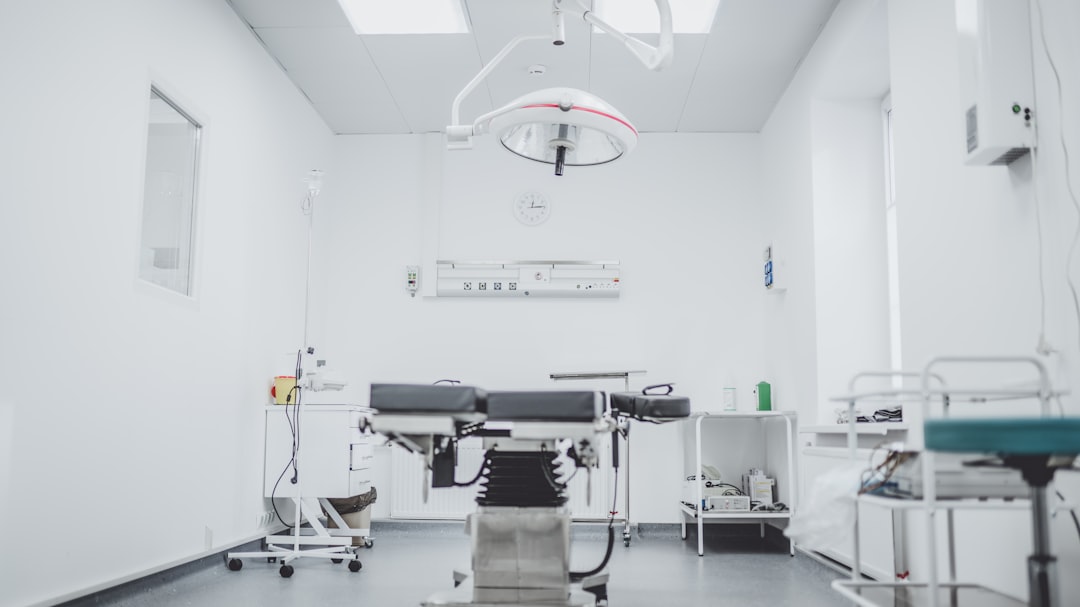Norway is renowned for its pristine landscapes and high-quality natural resources, which extend to its food safety and tap water quality. The country’s commitment to maintaining rigorous standards ensures that both the food consumed by its citizens and the water they drink are safe and of exceptional quality. This commitment is not merely a matter of public health; it reflects a broader cultural ethos that values sustainability, environmental stewardship, and the well-being of its population.
As such, understanding the frameworks that govern food safety and tap water quality in Norway is essential for both residents and visitors alike. The Norwegian government has established comprehensive regulations and standards that govern food safety and water quality. These regulations are designed to protect consumers from potential hazards while promoting transparency and accountability within the food supply chain.
In a nation where seafood, dairy, and organic produce are staples, ensuring that these products meet stringent safety criteria is paramount. Similarly, the quality of tap water is a critical concern, given Norway’s reliance on natural water sources. This article will delve into the various aspects of food safety and tap water quality in Norway, exploring regulations, common contaminants, risks, and practical tips for consumers. Book your 1-hour strategy session with Norway Relocation Group.
Summary
- Norway has strict regulations and standards for food safety and tap water quality to ensure the health and well-being of its citizens.
- Common contaminants in Norwegian tap water include bacteria, viruses, and chemicals, which can pose health risks if not properly managed.
- Risks and concerns for food safety in Norway include foodborne illnesses, allergen contamination, and improper food handling and storage.
- To ensure food safety in Norway, it is important to follow proper hygiene practices, store food at the correct temperature, and be aware of allergen information.
- Government initiatives in Norway focus on monitoring and enforcing food safety and tap water quality standards, as well as providing resources for consumer education and protection.
Regulations and Standards for Food Safety in Norway
In Norway, food safety is governed by a robust framework of laws and regulations that are designed to protect public health. The primary authority overseeing food safety is the Norwegian Food Safety Authority (Mattilsynet), which operates under the Ministry of Agriculture and Food. This agency is responsible for enforcing food safety laws, conducting inspections, and ensuring compliance with both national and European Union regulations.
The legal framework encompasses various aspects of food production, from farm to fork, including hygiene standards, labelling requirements, and traceability measures. The regulations stipulate that all food products must be safe for consumption, free from harmful contaminants, and accurately labelled to inform consumers about their contents. This includes strict guidelines on the use of additives, pesticides, and veterinary medicines in food production.
Additionally, Norway has implemented Hazard Analysis Critical Control Point (HACCP) principles across the food industry to identify potential hazards and establish control measures. These regulations not only safeguard public health but also enhance consumer confidence in the food supply chain.
Regulations and Standards for Tap Water Quality in Norway

Norwegian tap water is widely regarded as some of the best in the world, thanks to the country’s abundant natural resources and stringent regulatory framework. The quality of drinking water is primarily regulated by the Norwegian Water Resources and Energy Directorate (NVE) and the Norwegian Food Safety Authority. These agencies work together to ensure that tap water meets high safety standards, which are aligned with both national legislation and European Union directives.
The regulations governing tap water quality encompass a range of parameters, including microbiological safety, chemical composition, and physical characteristics. Water suppliers are required to conduct regular testing to monitor for contaminants such as bacteria, heavy metals, and other harmful substances. Furthermore, consumers are entitled to receive information about the quality of their drinking water, including any detected contaminants and the measures taken to address them.
This transparency fosters trust in public water systems and reinforces the importance of maintaining high standards for tap water quality.
Common Contaminants in Norwegian Tap Water
While Norway’s tap water is generally of excellent quality, certain contaminants can occasionally pose risks to public health. Microbial contaminants such as bacteria and viruses can enter the water supply through various means, including agricultural runoff or inadequate treatment processes. Although such occurrences are rare due to stringent monitoring and treatment protocols, they underscore the importance of ongoing vigilance in maintaining water quality.
Chemical contaminants can also be a concern, particularly in areas where industrial activities or agricultural practices may introduce pollutants into water sources. Heavy metals like lead or cadmium can leach into drinking water from old pipes or industrial discharges. Additionally, agricultural runoff may introduce pesticides or nitrates into groundwater supplies.
While these contaminants are typically found at levels well below safety thresholds, continuous monitoring is essential to ensure that any potential risks are promptly addressed.
Risks and Concerns for Food Safety in Norway
Despite Norway’s strong regulatory framework for food safety, several risks and concerns persist that warrant attention from both authorities and consumers. One significant concern is the potential for foodborne illnesses caused by pathogens such as Salmonella or E. coli. These bacteria can contaminate food products at various stages of production, from farming to processing and distribution. Outbreaks can occur due to improper handling or cooking practices, highlighting the need for education on safe food preparation methods. Another risk arises from the increasing prevalence of antibiotic resistance among bacteria found in food products. The use of antibiotics in livestock farming can contribute to the development of resistant strains of bacteria that may pose a threat to human health. As such, there is a growing emphasis on promoting responsible antibiotic use in agriculture and encouraging consumers to choose products from farms that adhere to sustainable practices.
Risks and Concerns for Tap Water Quality in Norway

While Norwegian tap water is generally safe to drink, there are still concerns regarding its quality that should not be overlooked. One major issue is the potential for contamination from aging infrastructure. In some urban areas, old pipes may leach harmful substances into drinking water supplies, particularly heavy metals like lead.
Regular maintenance and upgrades to water distribution systems are crucial to mitigate these risks. Additionally, climate change poses a growing threat to water quality in Norway. Changes in precipitation patterns can affect the availability of clean water sources and increase the risk of contamination from runoff during heavy rainfall events.
As such, it is essential for authorities to adapt their monitoring practices and invest in infrastructure improvements to ensure that tap water remains safe for all citizens.
Tips for Ensuring Food Safety in Norway
To ensure food safety while living in or visiting Norway, consumers should adopt several best practices when handling and preparing food. First and foremost, it is essential to maintain proper hygiene by washing hands thoroughly before handling food items. This simple step can significantly reduce the risk of cross-contamination from harmful pathogens.
Additionally, consumers should be vigilant about cooking foods to appropriate temperatures to kill any potential bacteria present. Using a food thermometer can help ensure that meats are cooked thoroughly while avoiding undercooked dishes that may pose health risks. Furthermore, it is advisable to store perishable items at appropriate temperatures and consume them before their expiration dates to minimise the risk of spoilage.
Tips for Ensuring Tap Water Quality in Norway
Ensuring tap water quality at home involves several practical steps that residents can take to safeguard their drinking water. First, it is advisable to regularly check for any notices from local authorities regarding water quality issues or advisories related to specific contaminants. Staying informed about potential risks allows consumers to take necessary precautions.
If there are concerns about plumbing infrastructure or if one lives in an older building with outdated pipes, it may be prudent to invest in a water filtration system designed to remove specific contaminants such as lead or chlorine. Additionally, flushing taps before use—especially after prolonged periods of inactivity—can help clear any stagnant water that may have accumulated in pipes.
Government Initiatives for Ensuring Food Safety and Tap Water Quality
The Norwegian government has implemented various initiatives aimed at enhancing food safety and tap water quality across the country. One notable initiative is the establishment of comprehensive monitoring programmes that track both foodborne illnesses and water quality issues over time. These programmes enable authorities to identify trends and respond proactively to emerging risks.
Moreover, public awareness campaigns play a crucial role in educating citizens about safe food handling practices and the importance of maintaining clean drinking water sources. By fostering a culture of safety and responsibility among consumers, these initiatives contribute significantly to public health outcomes.
Consumer Rights and Resources for Food Safety and Tap Water Quality
Consumers in Norway have robust rights when it comes to food safety and tap water quality. The Norwegian Consumer Council (Forbrukerrådet) serves as an important resource for individuals seeking information about their rights related to food products and drinking water standards. This organisation provides guidance on how to report concerns or complaints regarding food safety issues or tap water quality.
Additionally, consumers can access information about local water quality reports through municipal websites or contact their local authorities directly for specific inquiries. Understanding these rights empowers individuals to advocate for their health and well-being while holding producers accountable for maintaining high standards.
Conclusion and Recommendations for Maintaining Food Safety and Tap Water Quality in Norway
In conclusion, Norway’s commitment to food safety and tap water quality is evident through its stringent regulations and proactive initiatives aimed at protecting public health. While challenges remain—such as potential contaminants in both food products and drinking water—ongoing vigilance from authorities and consumers alike can help mitigate these risks effectively. To maintain high standards of food safety, individuals should prioritise hygiene practices when handling food, stay informed about potential risks associated with specific products, and support local producers who adhere to sustainable practices.
Similarly, ensuring tap water quality involves staying informed about local advisories, investing in filtration systems if necessary, and advocating for infrastructure improvements where needed. By fostering a culture of awareness and responsibility regarding both food safety and tap water quality, Norway can continue to uphold its reputation as a nation committed to public health and environmental sustainability—values that resonate deeply within its society.
Speak Norwegian with confidence. Enroll in a class at the NLS Norwegian Language School now.

